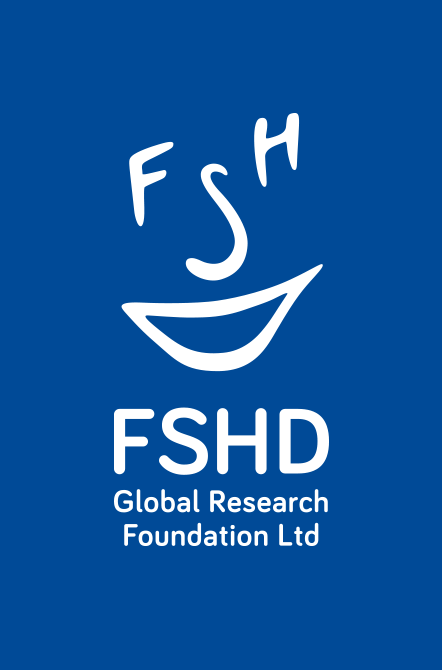GRANT 15
Research Institution: The Ohio State University and Center for Gene Therapy, The Research Institute at Nationwide Children’s Hospital
Principle Investigator: A/Prof Scott Q. Harper and Dr Steve D Wilton
Type: Collaborative
Project title: “DUX4 inhibition as a therapeutic strategy for FSHD”
Status: Completed
Summary
Project goal: The overall goal of this project was to develop a translational strategy to treat. FSHD through DUX4 inhibition. FSHD is caused by expression of the DUX4 gene. This gene makes a protein called a transcription factor, which acts to turn other genes ‘on’ and ‘off’. In FSHD, DUX4 seems to function by turning ‘on’ genes that are toxic in muscle. We therefore propose that treatments for FSHD should centre on inhibiting DUX4. We developed a method to prevent DUX4 from being made in muscle, using a technology called RNA interference. This funding from FSHD Global has allowed us to show that RNA interference can reduce DUX4 toxicity. We anticipate that this treatment will best be delivered through the bloodstream, and we have injected mice with this potential therapy at very high doses to determine if it is safe. We tested two different treatments, and we found that one showed some toxicity in the heart, spleen, and liver, while the other has so far proven safe to all organs. We are performing additional safety studies in anticipation that this RNA interference therapy could be tested in human trials.
We thank the FSHD Global Foundation and its donors for their generous support of our work.
PROGRESS REPORTS
March 2012
Elevated levels of a gene called DUX4 in muscle have been recently linked to the development of the human disease facioscapulohumeral muscular dystrophy (FSHD), which is one of the most commonly inherited wasting diseases of muscle. Dr. Harper’s group proposes that inhibiting the protein produced by the DUX4 gene will improve muscle strength and quality of life in FSHD patients. They are developing two methods of inhibiting the DUX4 gene’s activity using synthetic genetic material (DNA), a treatment referred to as gene therapy. In their proposed study, they will determine the safe doses of the synthetic DNA that improve muscle strength, without producing any toxic effects, by testing a range of dosages, in mice that have symptoms similar to the human FSHD disease.
Update March 2013
Understanding how a disease is caused is required before treatments can be developed. Today, the search for the causes of many diseases begins by looking for mistakes in genes (DNA). The simplest result occurs when a disorder is found to arise from changes in a single gene. This so called “one gene-one disease” model aids rapid development of treatments for the disease. Unfortunately, the cause of FSHD is not simple. Actually FSHD is one of the most complicated inherited (genetic) diseases known to date. Scientists studying FSHD have spent most of the last 30 years attempting to solve the riddle about what causes it. As a result, developing treatments for the disease was nearly impossible. Importantly, this barrier has now been lowered and the causes of FSHD have become clearer. Several studies now point to a gene called DUX4 as one of the important factors in FSHD. Specifically, the disease appears to be associated with higher levels of DUX4 in FSHD affected muscles than normal muscles. This basic knowledge now provides a means of developing FSHD treatments. Dr Harper’s group proposes that treatment can be accomplished by reducing expression of DUX4. The overall goal of their project, funded by FSHD Global Research Foundation, is to develop treatments for FSHD by inhibiting the DUX4 gene. In the first half-year, they have developed an efficient method of naturally blocking the DUX4 gene (the method is a modified version of a natural process called RNA interference). They tested this treatment in muscles of mice altered to express human DUX4, and found that their treatments reduced DUX4 expression and associated muscle wasting. Their initial findings were published in the renowned scientific journal, Molecular Therapy. They are now doing more extensive efficacy and safety testing on the treatment and expect to report their results in the next 6-12 months. FSHD Global Research Foundation funding has been critical for this important work, and has supported both salaries and the costs of experimental materials used. Dr Harper’s group expressed their gratitude to FSHD Global Research Foundation and its generous donors for crucial support of their research program.
Update August 2013
The overall goal of this project is to develop a strategy to treat FSHD through DUX4 inhibition. Overall, there has been progress in the second six months of year 1. This work supported by FSHD Global hinges on the delivery of the treatment into muscle. Although the overall goals of this project have been so far successful, progress in the second half of this year has been delayed several months due to technical issues with the viral delivery system required for the DUX4 inhibition. These production problems are now solved, and the production system streamlined to avoid similar delays in the future.
Mounting evidence over the last several years links FSHD to expression of a gene called DUX4. If turned “on” at high enough levels, DUX4 can be extremely toxic to muscle cells, leading to muscle cell death or dysfunction. Dr. Harper’s group therefore proposed that therapies for FSHD should center on preventing the DUX4 gene from turning “on”. The strategy they have been developing relies on a natural “gene silencing” process that all body cells possess called RNA interference, or RNAi. RNA is the intermediate between the gene (DNA) and the protein produced from the turned on gene. The RNAi can therefore be used to inhibit the production of the gene’s protein. Dr. Harper’s group have developed a way to use this natural RNAi process to their advantage, by re-directing some of the muscle’s natural gene silencing activity against DUX4.
With support from FSHD Global, this past year they have developed RNAi to specifically prevent DUX4 from being made in muscles. Their initial studies, published last year in the scientific journal Molecular Therapy, showed that this strategy could effectively prevent DUX4 from damaging mouse muscles. To apply this approach for treatment of human FSHD they must first ensure it is safe for long-term use. They are currently testing the safety of this RNAi system, for long-term use, in mice. Dr. Harper has thanked FSHD Global Foundation and its donors for generous support, which has funded scientists’ salaries, laboratory supplies, and maintained the study mice that are so critical to the further development of this project.
Update April 2014
Current research supports that FSHD results when the DUX4 gene is inappropriately expressed and toxic levels of the DUX4 protein occurs in muscles. Dr. Harper believes that FSHD treatments should center on blocking the DUX4 gene or protein production. In this study, funded by FSHD Global, his group developed two strategies to reduce DUX4 toxicity. One approach used small synthetic RNA (genetic material) molecules called microRNAs to block the DUX4 gene before it can produce the toxic DUX4 protein, while the second approach blocks the function of the DUX4 protein after it is already made in cells. They have already demonstrated that the first approach using microRNAs is effective at treating FSHD-like features in mice that mimic humans affected with FSHD. However, as with many drugs, microRNAs can be toxic at high doses. It is therefore extremely important to determine the safe and effective dose range for this treatment in animals, before testing in humans.
During the last 6 months of this project, they focused on testing the short- and long-term safety of their therapeutic microRNAs by testing increasing dosages in mice. Importantly, their microRNAs were safe at doses around 10 times greater than those shown to be effective in preventing muscle disease in mice. However, mice that received 25 times more microRNA began to show mild muscle damage 5 weeks after treatment, and mice receiving 100 times more showed extensive muscle damage. They have therefore identified a safe and effective dose range for this treatment in mice, which indicates the safe and effective doses for humans. In the next 6-months, they expect to begin demonstrating the safety and efficacy of their alternative DUX4 protein-targeted treatment. Dr. Harper’s group has gratefully acknowledged FSHD Global and its donors for their generous support of their research.
Update December 2014
FSHD is caused by the DUX4 protein. This protein acts to turn other genes ‘on’ and ‘off’. In FSHD, the DUX4 protein seems to function by turning ‘on’ genes that are toxic in muscle. The Harper group proposes that treatments for FSHD should focus on inhibiting the DUX4 protein. They have developed a method to prevent the DUX4 protein from being made in muscle, using a technology called RNA interference to block the DUX4 gene that produces the protein. Funding from FSHD Global has allowed the group to show that this method can reduce the DUX4 protein toxicity, and they have tested the range of doses at which this therapy is safe. However, this treatment does not inhibit the DUX4 protein production 100%, and some DUX4 toxic protein “slips through the cracks” and is made in muscles anyway. To deal with this problem, they developed an additional strategy that works to block the protein that does get made by the muscle. To do this, they deliver a competitor of the toxic DUX4 protein, which prevents its damaging effects in muscle. In the last 6 months of this project, they have demonstrated that their DUX4 competition strategy works to prevent muscle wasting in mice. In the next funding period, plan to combine these two strategies, to develop a treatment that can block both the DUX4 gene and protein. They are grateful to FSHD Global Foundation and its donors for their generous support of our work.




